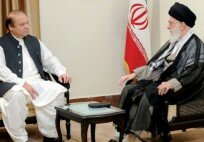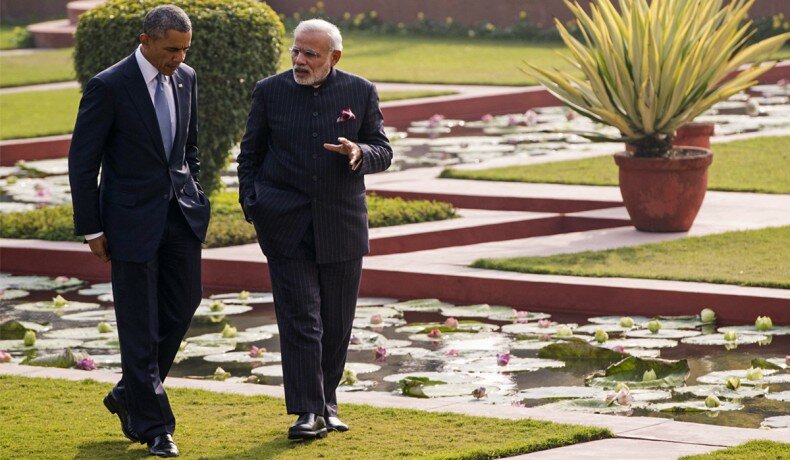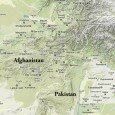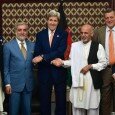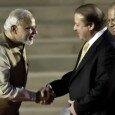By Fakhar Jalil –
Energy is the basic requirement for any country’s economic growth, development and for increasing the quality of life. In the republic of India around 600 million Indians do not have access to electricity and about 700 million Indian use bio mass as their primary energy resource for cooking.With 1.2 billion people, India desperately needs energy to fuel its economic growth. Its demand for energy is expected to grow by 95 percent by 2030. India does not possess sufficient energy resources to cater to either current or future requirement.
During 2029 – 2030 at 6 per cent GDP growth the Indian energy demand will peak at approximately 255,000 MW and 295,000 MW at 9 percent growth. India will, therefore, remain a net energy importer for the foreseeable future. While coal remains India’s main energy source also there will be a growing use of gas.
To eradicate poverty, India requires sustained economic growth at greater than eight per cent a year over the next twenty-five years, with development distributed equally. To sustain this growth, it requires access to guaranteed supplies of energy. India is simultaneously coming under increased international pressure to better control its greenhouse gas (GHG) emissions, mainly produced by the burning of fossil fuels. India must effectively separate its economic growth from fossil fuel demand while still ensuring access to sufficient energy, and adhering to enhanced ecological restrictions.
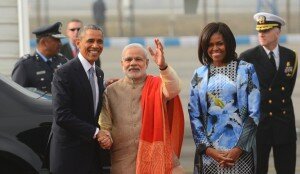 With above mentioned eye opening figures and tremendous level of energy demand it is evident that India requires great support of energy rich countries to help her meets its energy requirements. The recent visit of President of United States of America, Barack Obama to India during 25- 27 January 2015 is one step in the direction of seeking energy cooperation from United States. According the official document released by the white house with the title of “Shared Effort; Progress for all” on the Obama’s visit to India both the countries have agreed upon cooperating in the fields of Climate and Clean Energy.
With above mentioned eye opening figures and tremendous level of energy demand it is evident that India requires great support of energy rich countries to help her meets its energy requirements. The recent visit of President of United States of America, Barack Obama to India during 25- 27 January 2015 is one step in the direction of seeking energy cooperation from United States. According the official document released by the white house with the title of “Shared Effort; Progress for all” on the Obama’s visit to India both the countries have agreed upon cooperating in the fields of Climate and Clean Energy.
As mentioned in the official statement India intends increases her share of renewable energy consistent with its intended goal to increase its solar capacity to 100GW by 2022. India already has the world’s largest Solar Park located on 2,000 hectares of land at Charanka village in the State of Gujrat which produces 600 MW of solar power. This solar park is three times larger than the Chinese Golmud Solar Park, which held the record since it was finished in October 2011 with a total capacity of 200 MW. The aim of India according its “green goals within 2020” is that 15% of India’s total energy consumption should come from renewable sources of energy which is currently at 6%. Another solar power project is “Dhursar concentrated solar power (CSP) project” in the state of Rajahstan India. The concentrated solar power (CSP) plant is expected to be the largest solar thermal power plant in Asia and the largest in the world using the “linear Fresnel reflective technology”. The concentrated solar power plant is part of the first phase of the ambitious Indian program, “the Jawaharlal Nehru National Solar Mission”, which aims to set up 22,000 MW of solar power capacity by 2022. And it will offset over 2.1 million tonnes of carbon dioxide emissions over a period of 10 years.
The United States has emphasized on India that it reduces its carbon emission by using alternate sources of energy. The Indian efforts to utilize solar energy are clearly the step towards employment of renewable energy. For the said purpose both India and USA have a robust program of cooperation which is called “Partnership to Advance Clean Energy” also known as (PACE). Both the countries have jointly funded the $125 million program for the advance clean energy and Research (PACE-R) in the fields of research in solar energy, advanced bio-fuels, building energy efficiency and launching new tracks on smart grid and grid storage technology.
India having the second largest population in the world has high impacts on the climate and carbon emissions. In the Obama’s recent visit he was successful in convincing the Indian prime minister to involve the country in the upcoming “Paris Agreement for Climate Change” Which is a new agreement that will be adopted in 2015, at the Paris climate conference, and implemented from 2020. It will take the form of a protocol, another legal instrument or an agreed outcome with legal force, and will be applicable to all Parties. It is being negotiated through a process known as the “Durban Platform for Enhanced Action.”
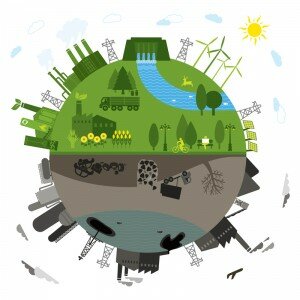 The United States will aid India with $1 billion to finance its renewable energy research but in return India has agreed to participate in dialogue on Hydrofluoric Carbons HFC’s at the UN Montreal Protocol on substance that aims to reduce consumption and production of HFC’s. India in past has refused to participate in any such negotiations claiming that other sources of renewable energy are too expensive and owned by corporate giants which are not easily accessible to developing countries. It is interesting to note that India’s change in stance on HFC’s will be greatly affecting its coolant industry of refrigeration and air conditioning which is estimated over Rs. 15000 crores.
The United States will aid India with $1 billion to finance its renewable energy research but in return India has agreed to participate in dialogue on Hydrofluoric Carbons HFC’s at the UN Montreal Protocol on substance that aims to reduce consumption and production of HFC’s. India in past has refused to participate in any such negotiations claiming that other sources of renewable energy are too expensive and owned by corporate giants which are not easily accessible to developing countries. It is interesting to note that India’s change in stance on HFC’s will be greatly affecting its coolant industry of refrigeration and air conditioning which is estimated over Rs. 15000 crores.
The Indo-US cooperation in energy and climate has number of implications for Pakistan. Energy shortages are driving Pakistanis to an edge and are exacerbating their economic insecurities as well. The average demand is 17,000MW and the shortfall is between 4,000 and 5,000MW. In the next 10 years, peak electricity demand is expected to rise by four to five per cent, which is roughly 1,500MW. In the times of severe energy crisis Pakistan can absolutely use assistance from its supposedly ally United States, in the field of renewable and clean energy. Investments by USA in solar energy production in Pakistan have greater potential equally to that of India.
America’s discriminatory attitude towards Pakistan in the energy sector could be a great setback for country’s economic growth as well as it will create a regional imbalance between two nuclear powers of south Asia that happen to be hostile towards each other, to empower one with all possible aid and ignore other regardless of it being in the worst energy crisis till date is quite an unhealthy practice for the regional peace, stability and balance of power. It aims to create a regional hegemony with a so called regional major power that is if not completely then at least adequately “self sufficient in energy requirements”. Such discriminatory cooperation will lead to anarchical region specifically and danger to international peace generally.





























































